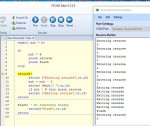Hi Folks. I want to come to grips with recursion, but I am unable to find a clear explanation. The best I have been able to come up with, as applied to programming, is "a program that calls itself".
So is the following code an example of recursion?
B1=0
Begin:
For b1=1 to 10
If b1=10 then GOTO flash
B1=b1+1
Pause 1000
Next
Flash:
High c.0
Pause 1000
Low c.0
Pause1000
GOTO flash
I would appreciate your comments please. Ben Baker
So is the following code an example of recursion?
B1=0
Begin:
For b1=1 to 10
If b1=10 then GOTO flash
B1=b1+1
Pause 1000
Next
Flash:
High c.0
Pause 1000
Low c.0
Pause1000
GOTO flash
I would appreciate your comments please. Ben Baker

